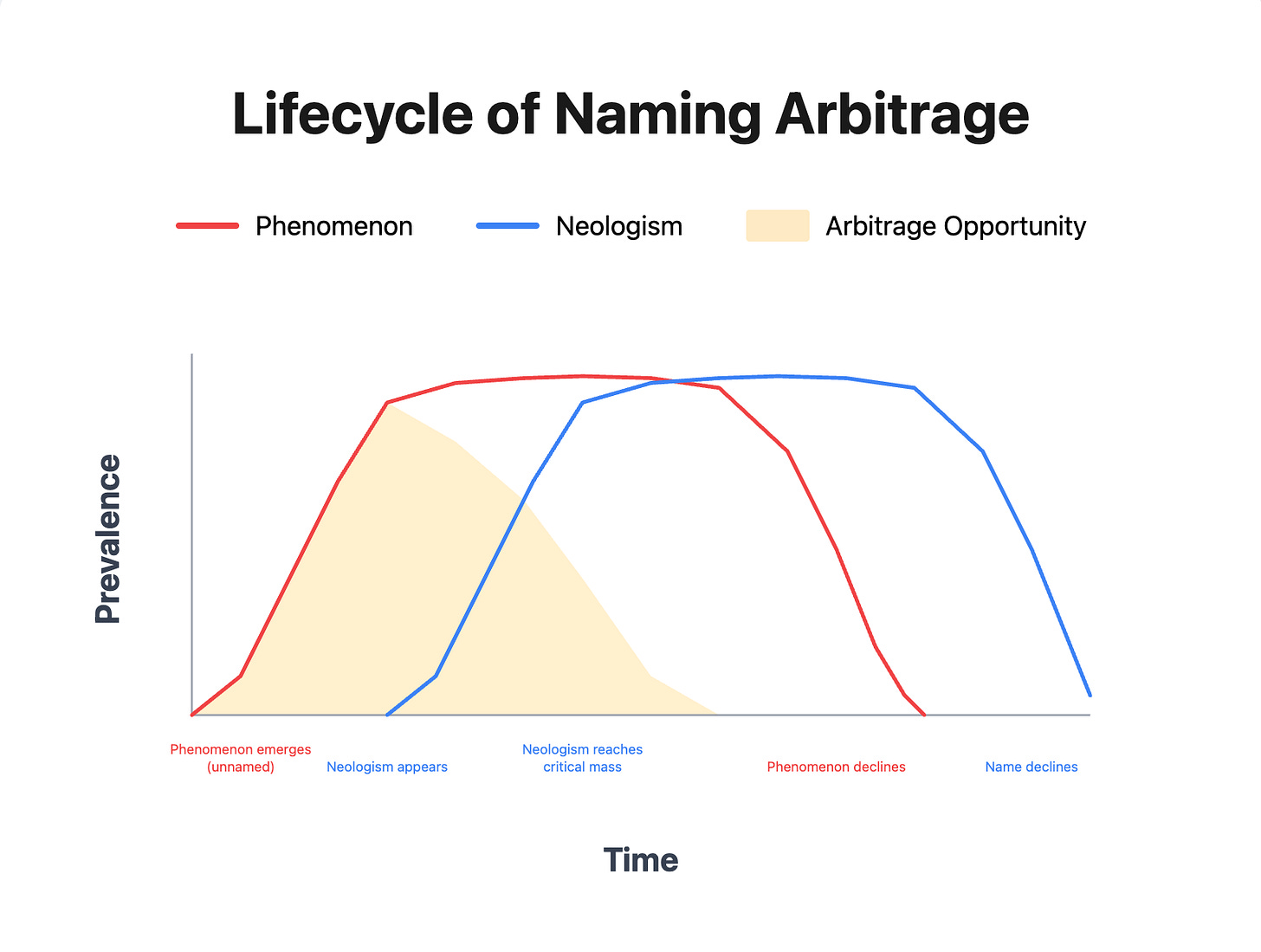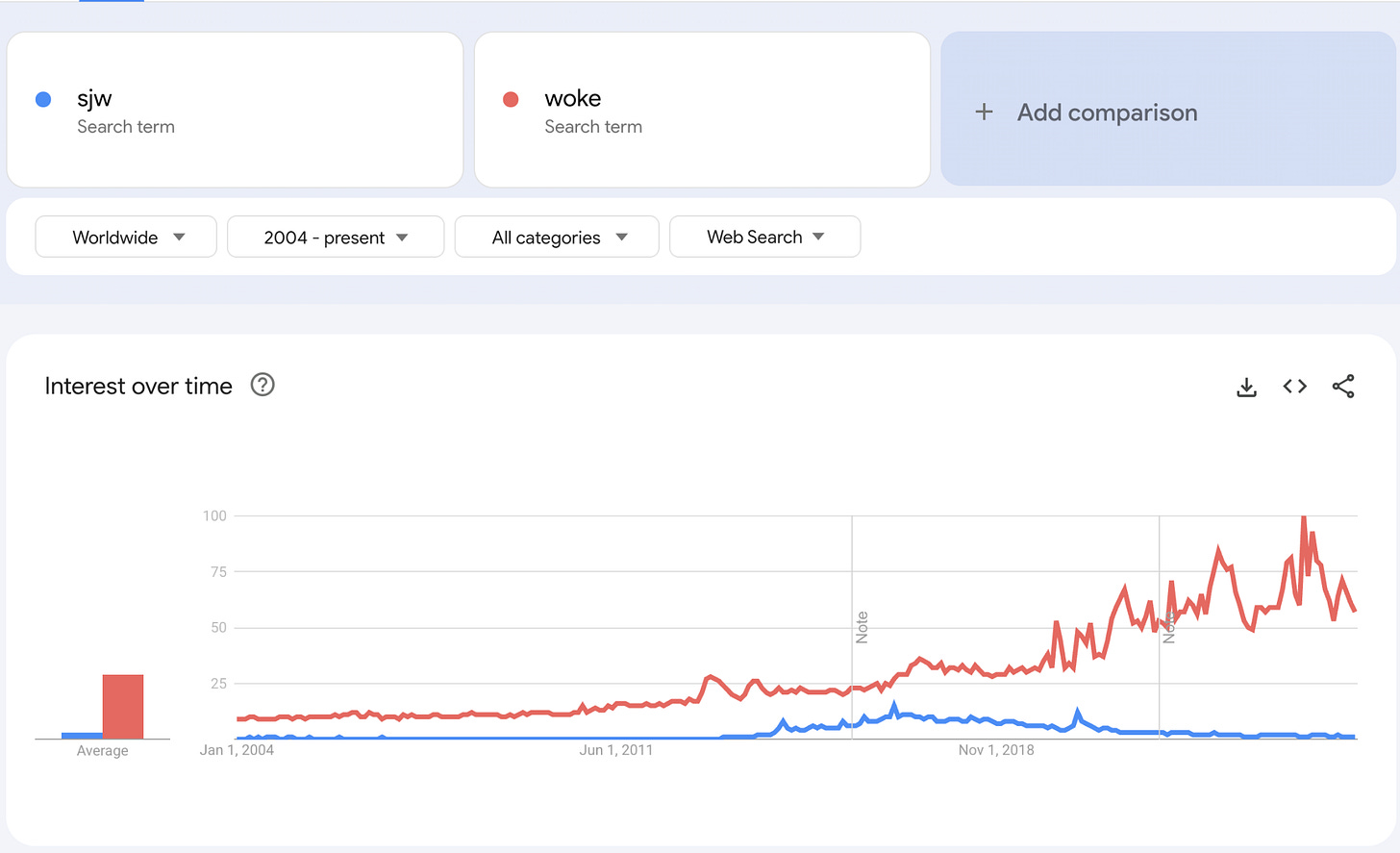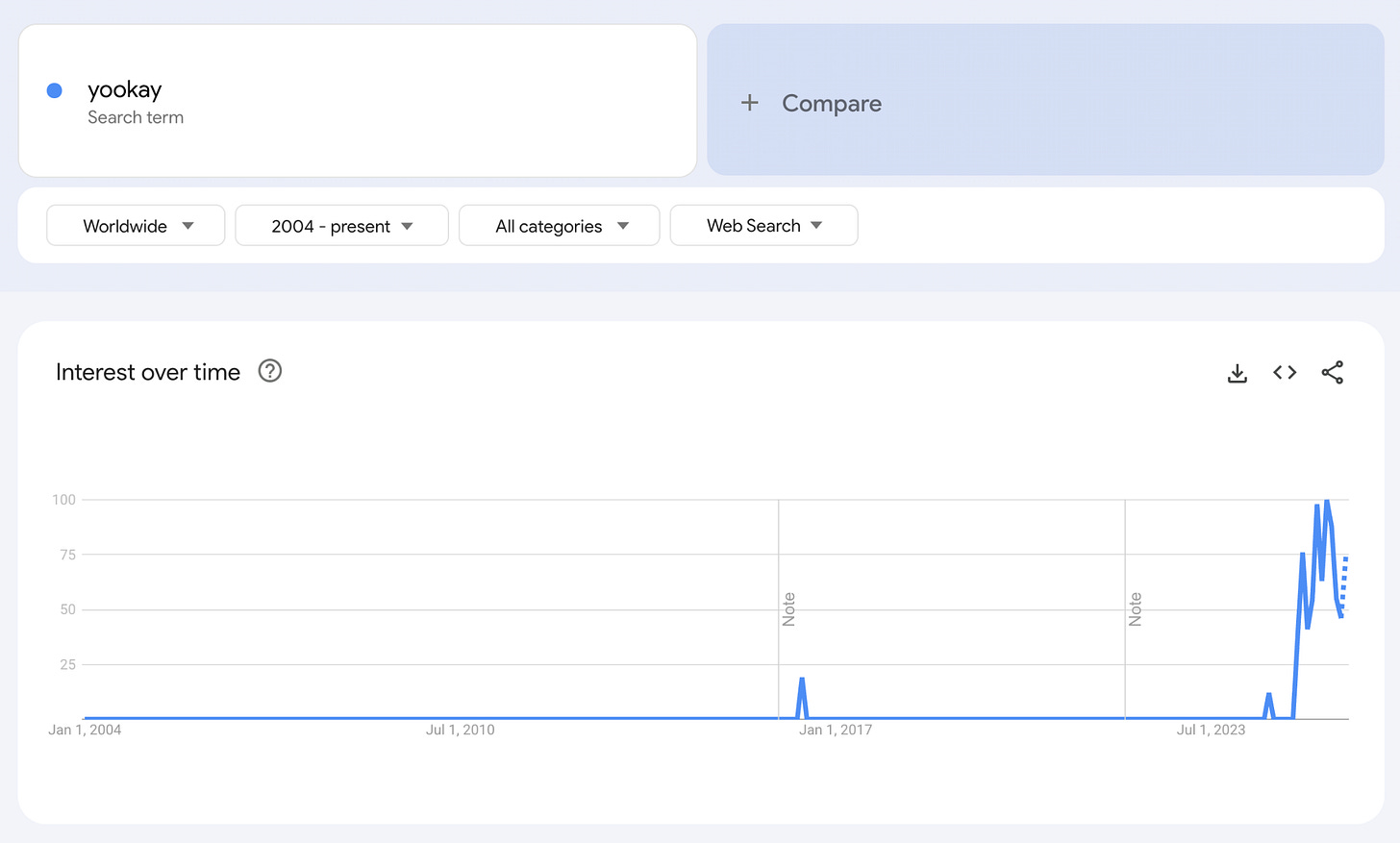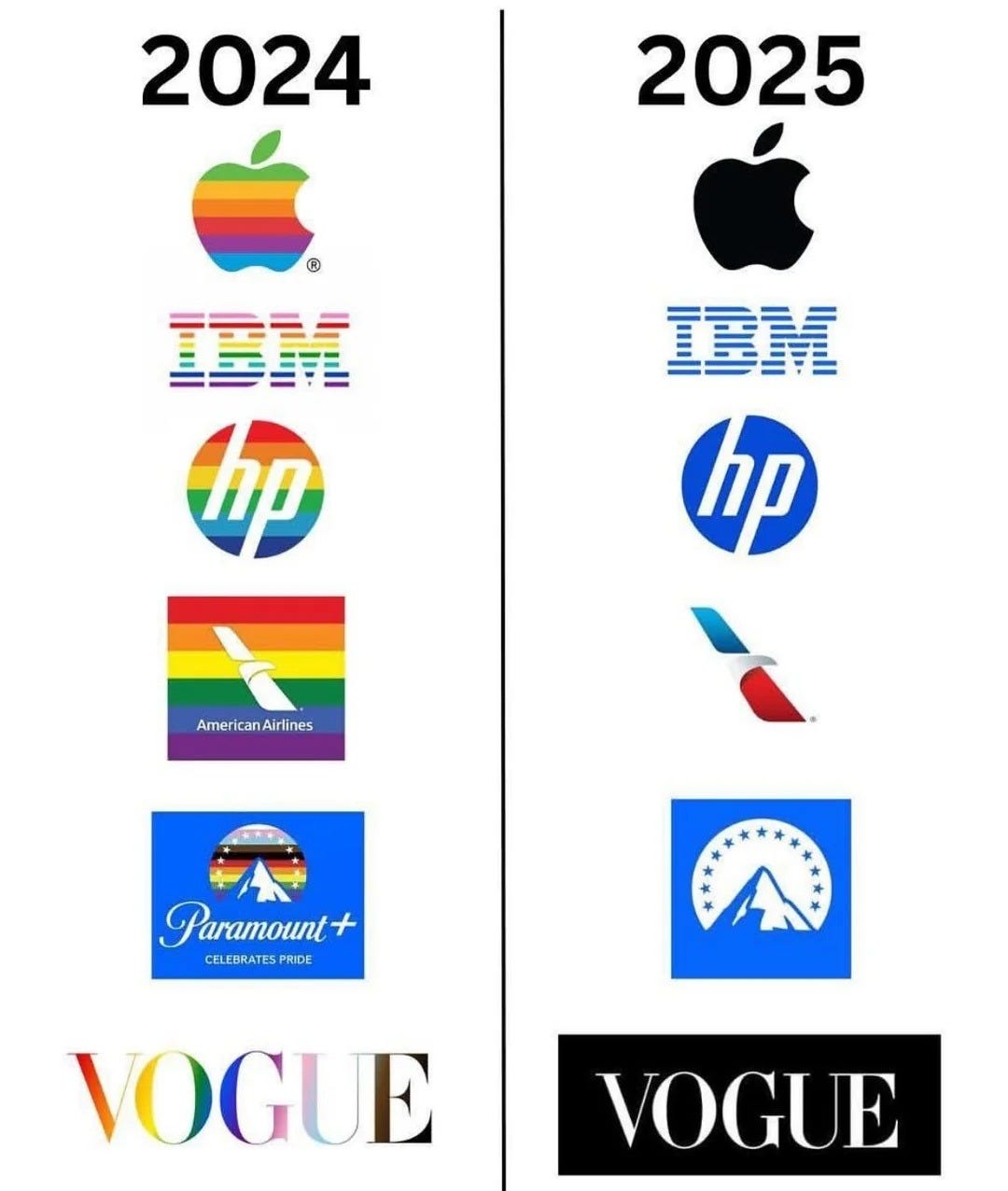The Arbitrage Window
A picture is worth 1000 words. What’s the going rate for diagrams? Idk either, let’s find out together.
The rest of this essay is dedicated to unpacking the following diagram:
Put simply: A new phenomenon emerges. No one has a name for it. As it grows everyone feels it, but doesn’t really have the language to point to it at all. Trying to talk about it is awkward and stilted. Yet, the phenomenon is growing at increasing speed. This period is the arbitrage window. When the phenomenon has grown big enough more people try to put an effort into naming it. Then, some people start attempting to name it. Most of these fail to take off1. Eventually one sticks, reaching critical mass. Everyone can now do what they couldn’t do before: talk about the phenomenon and start coordinating how they act towards it (usually to do away with it). The arbitrage window starts shrinking and the cycle is over.
OK, we nailed it: a diagram is 130 words. Great essay, see you again tomorrow.
Just kidding, let’s be serious for a moment and unpack this properly, that is, stage by stage.
Stage 1 — The Phenomenon exists (unnamed)
The first stage is marked by the emergence of a new phenomenon. This new phenomenon might be just about anything: a new way of behaving, of being, of orienting towards the world. A new identity, a brand, a genre, a politics. It isn’t even yet necessarily clear what it is. Just that something new has started to take off.
What’s most important is that, at this stage, simultaneously there very much is something new and it cannot be named. It just doesn’t have a name yet. For most people it goes entirely unseen. Once you see it you can’t unsee it—but before you’ve seen it. The people who do see it are not even sure whether they’re seeing it or hallucinating it. Attempts at gesturing towards it flatline as no one can stay engaged with the “Oh, it’s kinda like” “It reminds me of” “I’m not sure how to say it…” for too long.
This Stage marks the beginning of the arbitrage window: all phenomenon, no name.
Stage 2 — A wild Neologism appears
At some point the phenomenon is sufficiently ubiquitous for many people to independently start trying to name it. Many names are attempted, some consciously workshopped as to the merits of their memetic spread.
“Ragebait”, “Clickbait”, or “It’s bad on purpose to make you click” are all independently emerging neologisms intended to name the very same modern noxious phenomenon—the deliberate attempt to annoy people in exchange of ad money—to divest it of its power.
“Woke” is another particularly relevant one.
Trends SJW vs WokeNotice how SJW (“Social Justice Warrior”) which preceded it got nearly completely dropped once a better term was found to name what was, at heart, the same phenomenon.
The spread of this neologism was done, in part, by things like the “Woke Capital” Twitter account. This account spent years chronicling the flirtations of Megacorps with, among other things, the LGBTQ+ movement through posts that were nothing but images and which, when consumed in quick succession, gave you an intuition for the gestalt, the phenomenon, that the name “Woke Capital” was attempting to point at.
The type of image “Woke Capital” would tweet.
Unfortunately it is not possible to find the original tweets of that account anymore. I presume it disbanded after it “won”.
However, it is possible to see another account attempting to follow the very same trajectory. The neologism “YooKay” was coined by Kunley Drupka, through the Yookay Aesthetics X account and it dedicates itself to doing the kind of work that @WokeCapital used to do, but for what it calls the ‘New Britain’.
The type of image “YooKay Aesthetics” tweets.
The Yookay Aesthetics is being relatively successful (50k followers with 3k posts). You can also see it succeeding both in the growing interest in “YooKay” as a search term, over time and in being addressed in more legacy publications, like Compact Magazine.
Trends YooKay
Stage 3 — A Neologism reaches critical mass
“Woke” is now just a term in our culture. We can use it in conversation without having to explain it—everyone knows what the speaker is trying to refer to. It’s hard to remember that there was a time when that was not the case. But there was. This difficulty to remember that things could be, and in fact were, otherwise is just what happens once a neologism has achieved critical mass.
The importance of critical mass is that once a term is sufficiently widely shared, inferential distances get sufficiently shortened that people don’t have to wait around for your attempted gesturing and you can just say one word and they know what you mean. And because that is possible the word itself becomes a Schelling point to coordinate behavior around.
It’s literally impossible to formulate the question in public discourse “Are you pro-/against- Woke/Woke Capital/the YooKay?” before the terms have reached this stage. But it is definitely possible to formulate it after they have. And, because it is, it is possible to re-orient towards them. “Do we actually endorse this?”
While before they could be named they just… happened, they were just “what is” and “how things are”. After the name has reached critical mass the public discussion shifts from whether they’re a thing to whether they should be.
Stage 4 — The Phenomenon declines
The arbitrage window was the time between the moment the phenomenon emerged and the moment a neologism for it reached critical mass.
During this moment the phenomenon could just chug along unnoticed and unimpeded. It’s very hard to see what you can’t name, much less to fight it. The golden age is over.
Once the arbitrage window has closed the incentives flip and the phenomenon starts very actively receding. This is seen in people (and megacorps) distancing themselves from it, or retconning the past to imply they never were associated with it in the first place.
@WokeCapital won. Game over.
Wow, turns out a diagram is worth 1000 words too. Weird.






